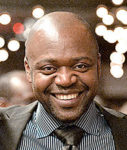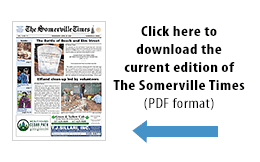(The opinions and views expressed in the commentaries and letters to the Editor of The Somerville Times belong solely to the authors and do not reflect the views or opinions of The Somerville Times, its staff or publishers)

By Will Mbah
Candidate for Somerville City Councilor at Large
The process of Participatory Budgeting began this year as an experiment in citizen participation with the intent to help educate all residents about the methods of budgeting and, especially, to give high school students an initial experience in democratic process as they look forward to becoming active citizens when they reach voting age.
The idea of adding this process to the city’s annual routine of financial management first arose as part of the Charter Revision discussions in 2021. Advocates cited the use of participatory budgeting in other cities, describing the activity as a way to bring greater transparency to decision-making and allowing citizen-priorities to more strongly influence the overall budget process. The Charter Revision Committee and the City Council have not included the process as a mandated responsibility in the Charter draft, adopted in May. However, there was general support for starting the process experimentally and testing its effectiveness for later formalization.
For the participatory budget, the Council has set aside a small amount of the city’s general revenue — $1 million from last year’s (FY2023) budget. Of course, all the rest of the city’s revenue and spending — $337 million got FY 2024 – has gone through the normal budget process, with the Mayor proposing line by line expenditures and the City Council making the specific appropriations of funds.
Despite its small size, it is expected that the citizen interest that participatory budgeting will generate will have wider impacts. Participants in this activity – especially the young folks – will broaden their understanding and interest and become more engaged as time goes on.
What has happened so far?
In order to carry out this first year’s process, the Mayor appointed a Task Force, which took responsibility for designing the process. They spelled out all the steps and rules for taking public testimony and recommendations, reaching out to a wide public in all groups and languages, and choosing the eligible projects – all of which has been written up as Guidebook, found on the city website. The public engagement began on March 20, with a call to citizens to submit ideas about improvements that can be made on public property in order to benefit their neighborhoods and the community at large. The Guidelines specify that to be eligible for funding, projects must be one-time expenses, occur only on city-owned land or facilities and not require the city add staff or engage in full bidding and contracting procedures.
Two months were provided until May 20 for citizens to send in their proposals and the Task Force received a total of 966 communications. All the responses have been posted on the city’s website under a Participatory Budget tab.
During these summer months, the Task Force and a group of volunteer Budget Delegates, organized in five committees, are reviewing the proposals and giving each a weighted average score based on the evaluation criteria that are spelled out in the Guidelines. This evaluation will narrow down to a group of 20 of the best and most interesting proposals, at least one in each category. Then the Task Force will post the survey ballot, inviting all residents over 12 years old to vote in September and October. Votes will be received on line or on paper. Each winning proposal will have to receive at least 2,000 votes to be eligible for funding. Likely a choice will need to be made at the end, if the $1 million fund is insufficient to cover all the best programs.
Of course, even if a particular proposal cannot be funded through the Participatory Budget line, there will be alternative ways of funding it under other programs – such as Community Preservation, Community Development Block Grants and, of course, the city budget itself for next year.
What ideas for projects have been proposed? How has the process gone so far?
The 966 ideas that were received have been grouped into five categories. The largest numbers of specific proposals appeared in the categories of Streets and Sidewalks, Parks and Green Spaces and improvements to City Hall and other city buildings.
Many proposals are for better signage, crosswalks, and curb realignments at the intersections where the Community PATH bike lanes cross streets, as at Lowell, Cross, and Clyde Streets. Similarly, the intersections where ramps from the Community PATH descend down to street level are cited for signs and better sight lines. Traffic calming suggestions have been made for multiple locations for speed bumps, new curbing and sidewalk repairs.
A great variety of park improvements and green spaces have been proposed — trees and planting, repair and upgrading of recreational equipment, signs and amenities. One proposal is for the installment of new bleachers in McKinney Park, another is for a small wind turbine at Prospect Hill. Sprucing up city buildings with new paint jobs, added greenery and repairs also have been popular proposals.
Other interesting ideas are the creation of a sharing depot or “swap shop”– where people can bring tools and equipment to be borrowed by other homeowners and craftspeople. Ideas for weekend hours at the libraries and the Fabville craft shop, as well as planning for a community arts workshop and community center have been proposed.
With so many useful proposals, the voting process in the fall should be quite lively and elicit the attention of many citizens. With the multiple means of outreach in all languages that the Task Force has planned, we may expect the participatory budget process to achieve its main goal of bringing new voices and younger participants into the discussions of city finance and project planning.
Keep watching for the announcement in September that the ballot box is open.
If you want to learn more or support my campaign, please visit my website at willmbah.com.















Reader Comments